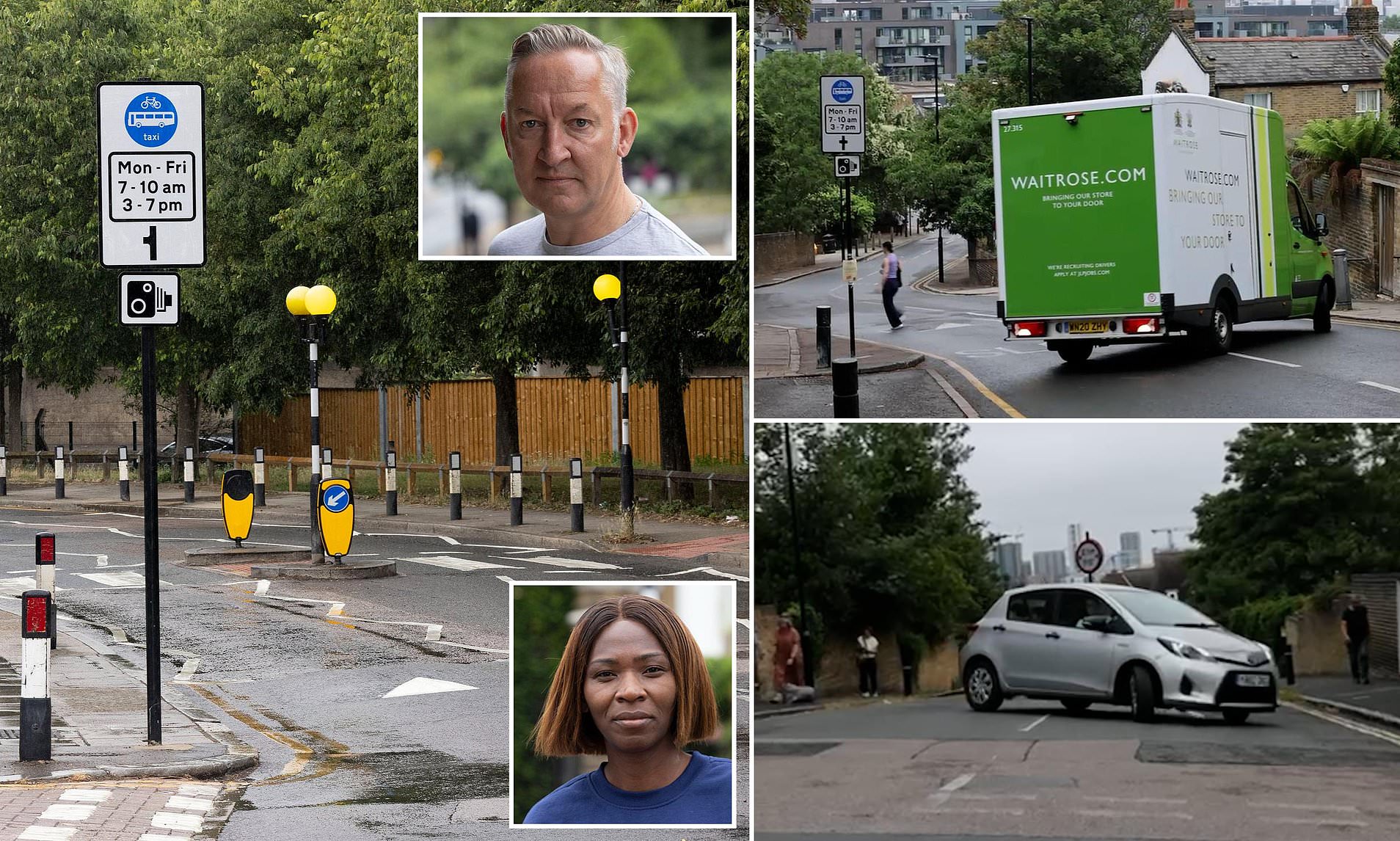The Chaos of Low Traffic Neighbourhoods in East Greenwich
Residents in East Greenwich, a neighborhood in southeast London, are facing growing frustration over the implementation of Low Traffic Neighbourhoods (LTNs). These areas, designed to reduce traffic and improve air quality, have led to significant disruptions for local drivers. According to reports, the council has generated £16,500 per day in fines from penalty notices issued to those who violate the LTN restrictions. This has sparked a debate about whether the scheme is truly beneficial or simply causing more harm than good.
Disruptions to Daily Life
The LTNs in East Greenwich have made it increasingly difficult for locals to carry out everyday tasks such as shopping, dropping children off at school, and commuting to work. Drivers are forced to take alternative routes, often leading to longer travel times and increased stress. MailOnline footage captured several instances where drivers had to make abrupt turns or detours to avoid fines. A grey van was seen braking suddenly before reversing, while a Waitrose truck made an awkward diversion. A laundry delivery lorry even backed out of a restricted road in a panic, highlighting the challenges faced by those navigating these areas.
Between January and May, the council collected £2.5 million in fines from 47,836 penalty notices issued on Westcombe Hill, Vanbrugh Hill, Halstow Road, and Maze Hill. This financial gain has raised questions about the true purpose of the LTNs and whether they are being used as a revenue stream rather than a genuine solution to traffic and pollution issues.
Impact on Families and Commuters
For many residents, the LTNs have created practical difficulties that affect their daily routines. Irene Asah, a mother of two, used to be able to drop her son directly outside his school gates. Now, she is forced to park further away and let him walk the rest of the way. This change has caused delays, with Ms. Asah often arriving late to pick up her son, which has put pressure on the school and her own schedule.
Colin Gifford, who lives at the top of Vanbrugh Hill, has also experienced the negative effects of the LTNs. His commute to the Blackwall Tunnel has become significantly longer due to the need to take a different route during rush hour. While he acknowledges that the LTNs benefit those living on the restricted roads, he believes the system is not effective for others in the area.
Concerns About Traffic and Public Transport
Kirsty Dunlop, another resident, expressed frustration with the LTNs, stating that they have made it harder for people to access key locations like the Blackwall Tunnel. She mentioned that what used to take just two minutes now requires a long detour, making it inconvenient for drivers and pedestrians alike. The build-up of traffic has also affected public transport, with buses struggling to navigate narrow roads and sometimes getting stuck in congestion.
Ms. Dunlop highlighted the impact on her family, particularly when it comes to getting her son to school. She noted that waiting for a bus can be time-consuming, especially in bad weather, and that teachers often face similar challenges when trying to park near their workplaces.
Financial Implications and Community Divisions
Marianne Chapman, who lives on Eastcombe Avenue, shared concerns about how the money collected from fines is being used. She questioned whether the funds are being directed towards environmental initiatives or simply added to the council’s budget. “It should go towards something relevant to what it is meant to be stopping,” she said.
Gareth Morgan, a resident of Halstow Road, admitted that he has had to be very careful with his driving routes. He also mentioned that he hasn’t met anyone who supports the LTNs, adding that the topic has become divisive within the community. Some residents choose to remain anonymous when discussing the issue, as it has created tension among neighbors.
Differing Opinions on the Scheme
While many residents are critical of the LTNs, there are still some who support them. Donald Reid, a 65-year-old homeowner, believes the scheme has reduced congestion and pollution in the area. He argues that encouraging people to use bikes or walk instead of driving is essential for achieving net zero goals. However, he acknowledges that the implementation of the LTNs was chaotic, with poor signage and confusion among drivers.
Councillor Matt Hartley, Leader of the Greenwich Conservatives, criticized the LTNs as part of a broader ideological approach that negatively impacts residents. He called for the council to listen to local concerns rather than focusing on generating revenue through fines.
Conclusion
The controversy surrounding the LTNs in East Greenwich highlights the complex balance between reducing traffic and protecting the interests of local residents. While the scheme aims to improve air quality and encourage sustainable transport, its current implementation has led to significant disruptions and frustrations. As discussions continue, it remains to be seen whether the council will address these concerns and find a more equitable solution for all.







